John Carter of Mars aka
Dotar Sojat of Barsoom
By Bert Ehrmann
March 2, 2012
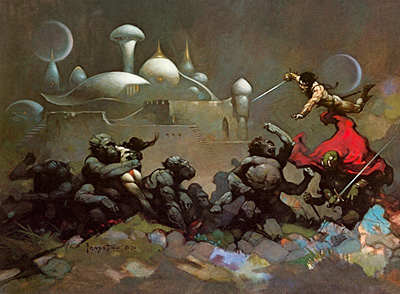
The turn of the 20th century must have been a wonderful time for those interested in the sky and astronomy. In 1910, Halley's Comet made a particularly spectacular pass of the Earth, coming so close that the planet passed through the tail of the comet. In Arizona, astronomer Percival Lowell was nightly scanning the planet Mars where he had detected evidence of canals* on that planet and had already published a book on them in 1906 called Mars and its Canals. Canals that he supposed were designed to transport water from the wetter polar regions of the planet to the dryer parts. Canals that had to have been designed and built by—something.
It was under these conditions that author Edgar Rice Burroughs, the creator of Tarzan, would write his first story chronicling Virginian John Carter and his adventures on the planet Mars serialized as A Princess of Mars (1911).
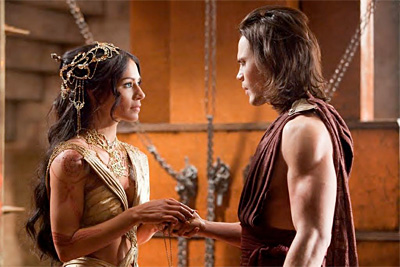
In the original A Princess of Mars story, John Carter is a veteran of the Civil War looking to strike it rich out west. In Arizona, he and a partner find a rich deposit of ore, but before they're able to cash-in they're attacked by Native Americans, John's partner is killed and he is forced to hide in a cave in order to escape the arrows. While inside, Carter is mysteriously put into a weird deep sleep and when he awakens Carter finds himself upon the surface of the planet Mars.
Once covered by great oceans, mighty cities and several highly technological species of Martians, the planet Mars is now a barren waste where water has to be transported from place to place via great canals. As Mars, known as Barsoom by the locals, slowly started to dry and the seas began to disappear much of this greatness of the peoples of Mars were replaced by a sort of primal barbarism.
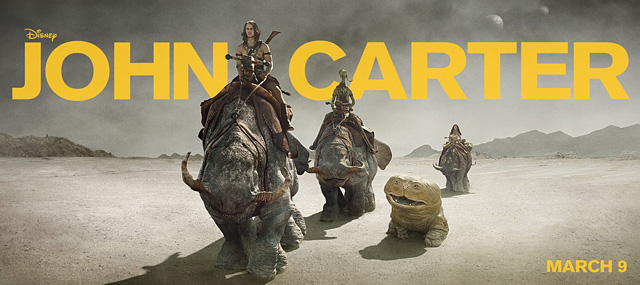
In A Princess of Mars, there are two main species of Martian; one green and the other red. The green Martians, known as Tharks, have four arms, tusks, stand 20 feet tall and are a nomadic peoples that divide their time between warring and the many great dead cities of Mars. The red Martians have red skin but look and act human in most respects. They are the maintainers of the technologies of old and run the machinery that literally creates the breathable air on Mars via special factories.
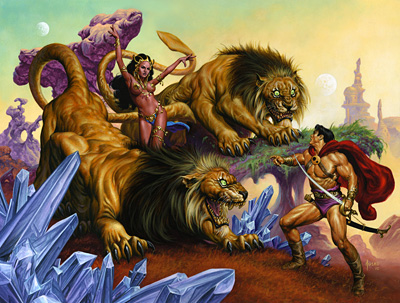
Carter finds that on Mars, because of its smaller size and lower gravity relative to the Earth, he has, what I suppose could be described as, super-powers. He can jump hundreds of feet and is much stronger than even the strongest Thrak. Even the mighty white apes of Mars, that are one of the only things the scares the Tharks, pose no threat to John Carter.
Much of A Princess of Mars deals with Carter being found and anointed as one of the Thrak chieftains because of his physical prowess, him becoming a friend with a Thrak names Tars Tarkas and John Carter meeting and falling in love with the red princess of the city Helium Dejah Thoris and the adventures they all have on Barsoom.
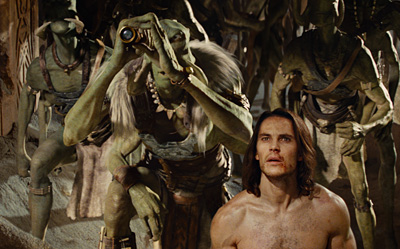
Now, a big screen version of A Princess of Mars, retitled as simply John Carter, is set to debut in cinemas March 9. Starring Taylor Kitsch as John Carter, Lynn Collins as Dejah Thoris and Willem Dafoe as Tars Tarkas, from the trailers I've seen John Carter looks stunning and seems to be faithful to the source materials. The only question is if it can match the grandeur and scope of the original stories, while at the same time being different and unique enough from other movies to avoid comparisons to films like Star Wars and Avatar, that, shall we say, "borrowed" heavily from the original John Carter mythos.
The real Barsoom, err…, I mean Mars, just so happens to be easy to spot in the night sky. Go out about an hour after sunset and look almost due east. The bright red "star" in the sky there isn't a star at all, it's really the planet Mars.
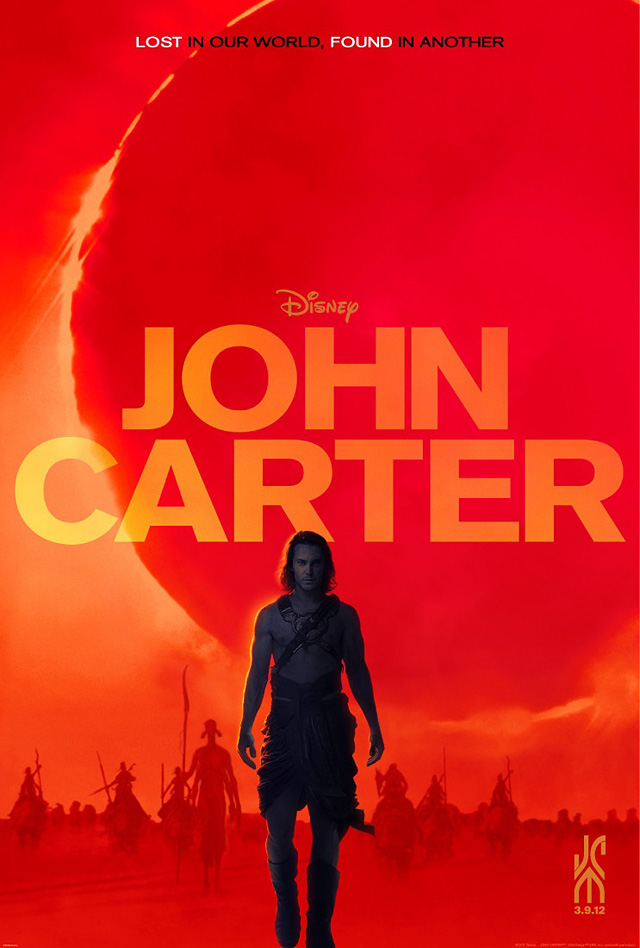
*Canals that turned out to be nothing more than optical illusions.